For the longest time, we have been stuck with waffles, pancakes, and scrambled eggs for breakfast, but it’s time for a change.
That’s because your morning meals are important, and adding a delicious twist to them can make them healthier and more enjoyable.
That’s the reason we are sharing the Japanese breakfast recipes because they are a welcoming change from the same old cereal.
All these Japanese breakfast recipes are well balanced, healthy, and easy on the stomach while giving you all the nutrients!
You Might Also Be Interested in:
Tamago Kake Gohan (Raw Egg over Rice)
Tamago Kake Gohan is a simple yet popular Japanese breakfast dish that consists of a raw egg mixed with hot steamed rice.
You canseason it with dark soy sauce and topped with various ingredients like chopped green onions, nori (seaweed), or furikake (seasoned rice seasoning).
The warmth of the rice slightly cooks the egg, creating a creamy and velvety texture.
This dish is beloved for its comforting qualities and is often considered a quick and nourishing way to start the day.
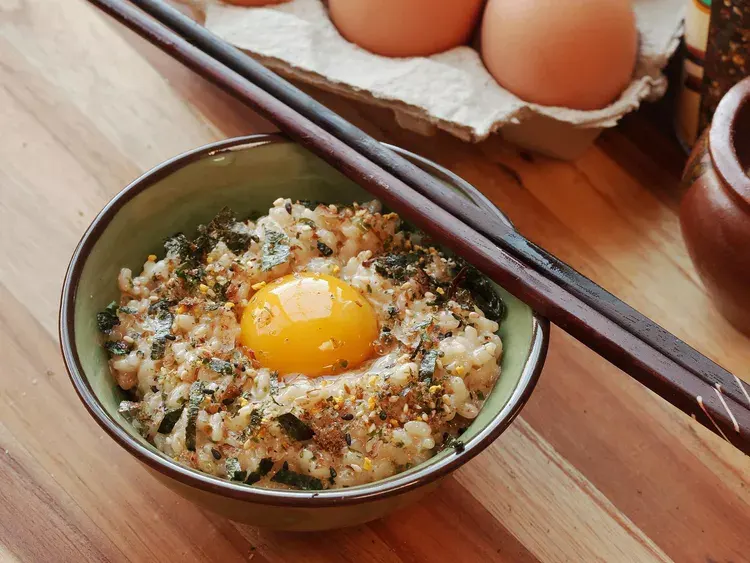
Miso Soup with Tofu and Wakame
Miso soup is one of the most popular dishes in Japanese cuisine, and it is commonly enjoyed as part of a traditional breakfast.
The soup is made from dashi (a broth made from dried bonito fish flakes or kombu seaweed) and fermented soybean paste called miso.
To prepare this dish, tofu and wakame (a type of seaweed) are often added to enhance its flavor and provide additional texture.
The soup is known for its rich umami taste and is believed to have several health benefits due to the probiotics present in miso.
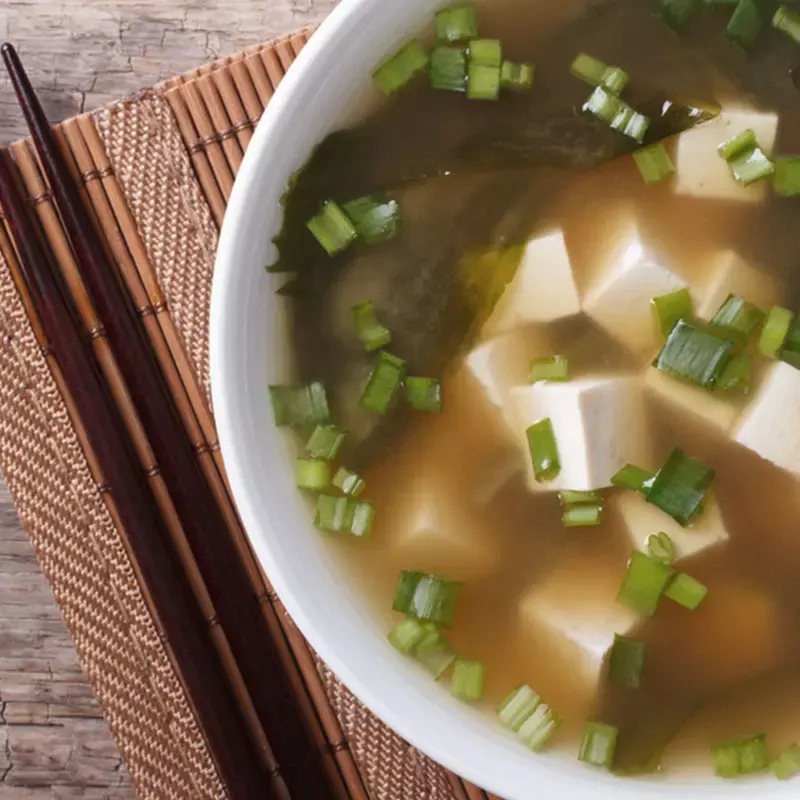
Onigiri (Rice Balls) with Various Fillings
Onigiri, also known as rice balls, are a convenient and portable breakfast option in Japan.
They are made by shaping steamed rice into triangular or oval shapes and often have various fillings in the center.
Popular fillings include pickled plums (umeboshi), grilled salmon, tuna with mayonnaise, and seasoned kombu.
Onigiri is typically wrapped in a sheet of nori to keep the rice moist and add an extra layer of flavor.

Natto and Rice
Natto is a Japanese breakfast food made from fermented soybeans. It has a unique sticky texture and a unique flavor that might be acquired taste for some.
Natto is often served over steamed rice and is commonly accompanied by toppings such as soy sauce, mustard, green onions, or raw egg.
This dish is not only a good source of protein but also contains beneficial bacteria and enzymes that are believed to contribute to gut health.
Natto and rice provide a nutritious and filling start to the day for many Japanese people.
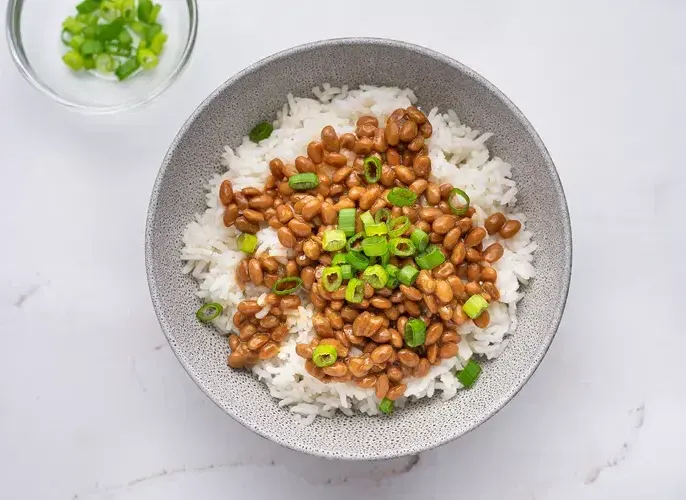
Japanese style Pancakes (Okonomiyaki)
Japanese style pancakes, also known as Okonomiyaki, are a popular breakfast dish that originated in Osaka.
These savory pancakes are made with a batter of flour, eggs, shredded cabbage, and ingredients such as diced pork, shrimp, squid, or vegetables.
The batter is cooked on a griddle or hot plate and topped with a special sauce called okonomiyaki sauce, mayonnaise, bonito flakes, and seaweed powder.
The result is a fluffy, flavorful pancake with a delightful combination of textures.
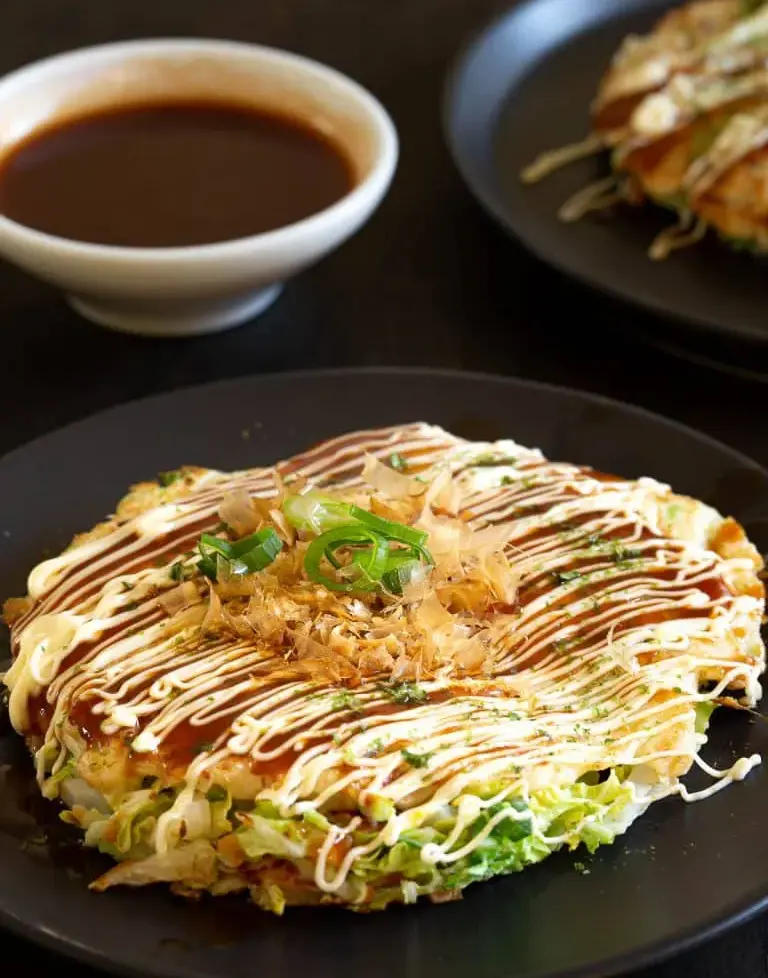
Grilled Fish (Yakizakana)
Grilled fish is a common feature in a traditional Japanese breakfast. Popular fish choices include mackerel (saba), salmon (sake), or sea bream (tai).
The fish is seasoned with salt or marinated in a soy based sauce, then grilled until it becomes crispy on the outside and tender on the inside.
The dish is often accompanied by a squeeze of fresh lemon juice, grated daikon radish, or a side of soy sauce for dipping.
Grilled fish provides a good source of healthy omega-3 fatty acids, so you can have a nutritious and satisfying breakfast option.
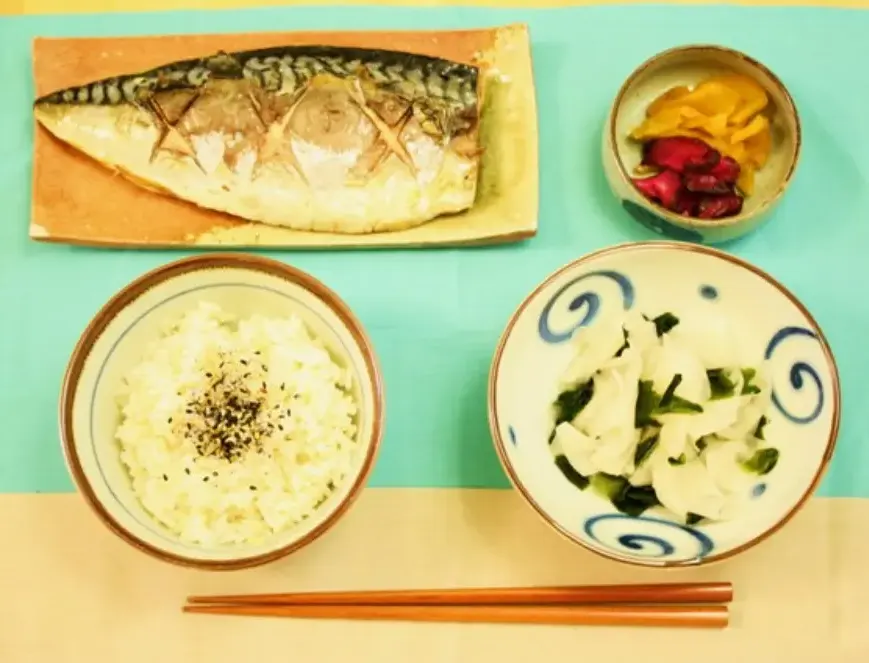
Ochazuke (Rice with Green Tea)
Ochazuke is a simple yet comforting Japanese breakfast dish made by pouring hot green tea over a bowl of steamed rice.
The tea can be plain or flavored with dashi (broth), and additional toppings are added to enhance the flavor and texture.
Common toppings include pickled plums (umeboshi), grilled salmon, seaweed, sesame seeds, or chopped green onions.
The warm tea infused rice creates a soothing and aromatic dish, perfect for a light and refreshing morning meal.
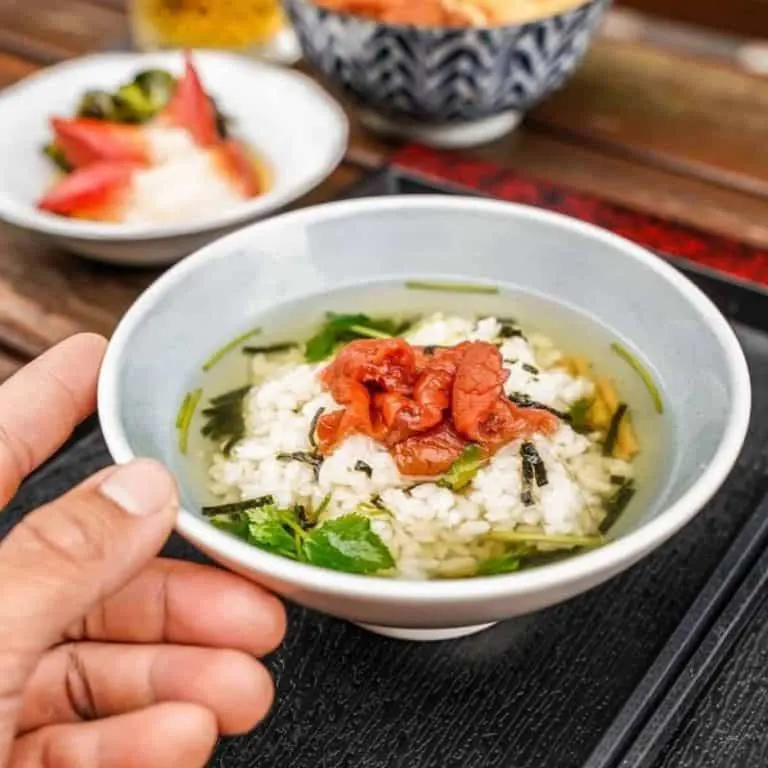
Tonjiru (Pork Miso Soup)
Tonjiru is a hearty miso soup that features pork and an assortment of vegetables.
The soup is made by simmering pork slices, usually with a fatty cut like belly or shoulder, potatoes, carrots, daikon radish, mushrooms, and konnyaku.
The miso based broth adds a savory and rich flavor to the soup, creating a satisfying and nourishing breakfast option.
Tonjiru is often enjoyed during the colder months and is loved for its comforting qualities.
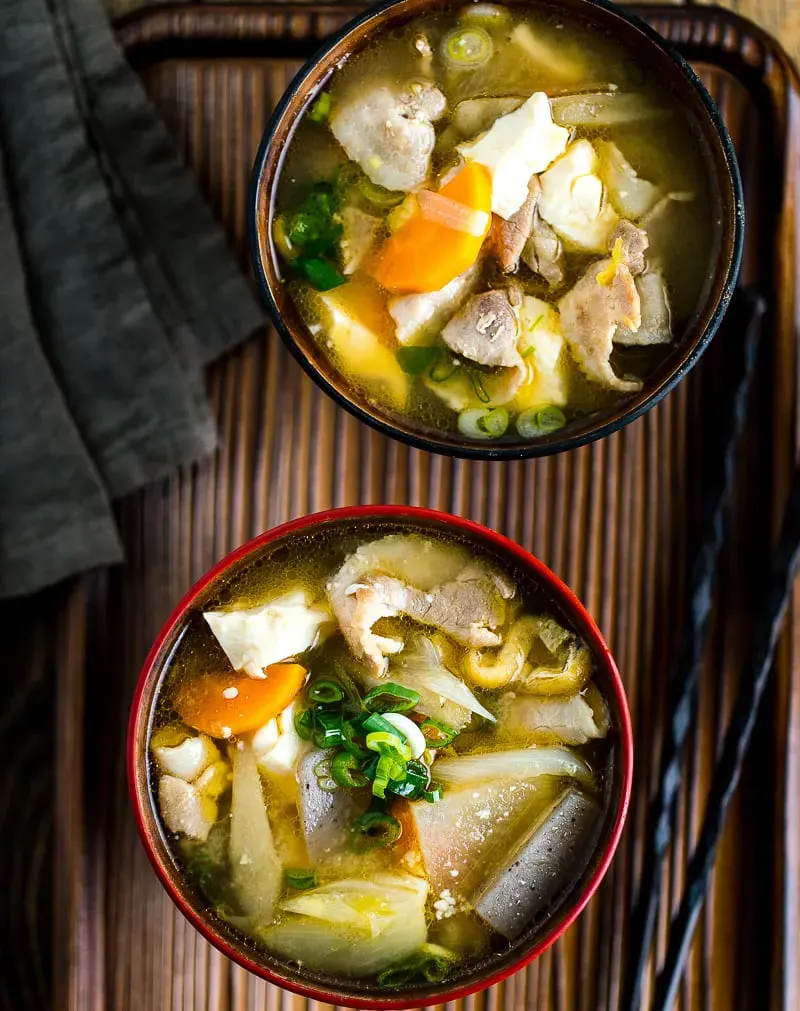
Zaru Soba (Cold Buckwheat Noodles)
Zaru Soba is a refreshing Japanese breakfast dish that consists of cold buckwheat noodles served on a bamboo tray (zaru) alongside a dipping sauce.
The noodles are cooked, chilled, and then rinsed to remove excess starch.
You can serve it with dip made from soy sauce, dashi, mirin, and garnished with toppings like grated daikon radish, sliced green onions, or shredded nori.
Zaru Soba is a light and healthy option, perfect for hot summer mornings, and provides a delightful contrast of flavors and textures.
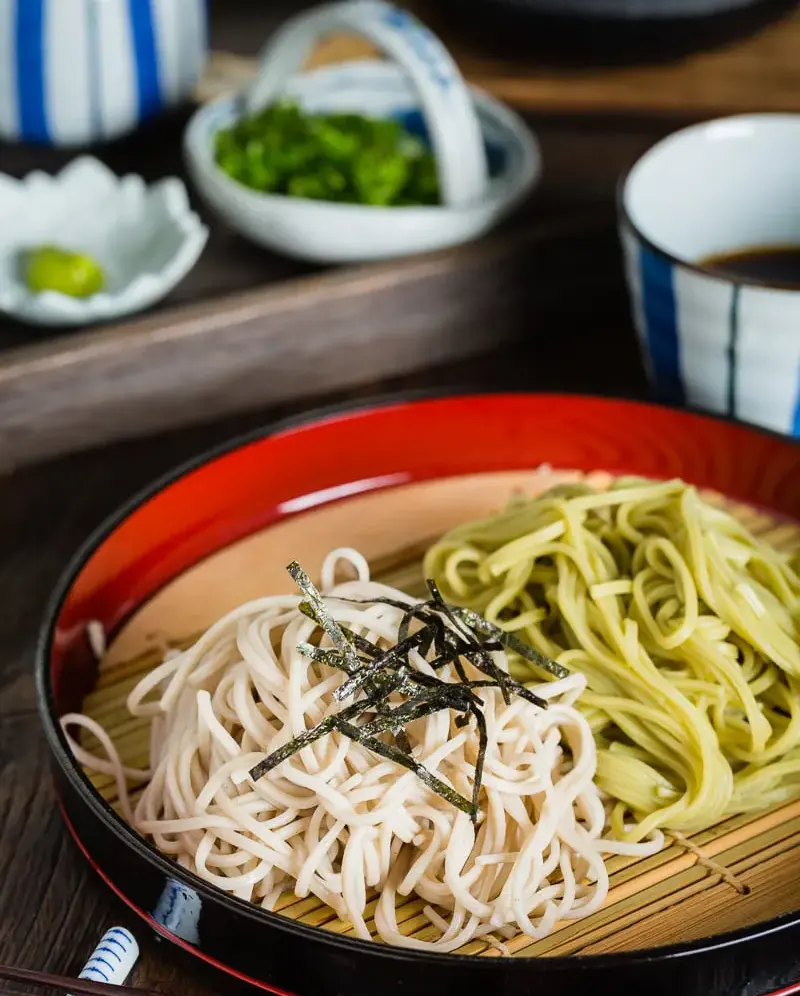
Japanese style Omelette (Tamagoyaki)
Tamagoyaki is a rolled Japanese omelette that is a popular addition to a traditional breakfast.
The mixture is then cooked in a rectangular pan layer by layer, rolled into a cylindrical shape, and sliced into bite sized pieces.
Tamagoyaki is known for its slightly sweet taste and delicate texture. It can be enjoyed on its own as a protein rich breakfast or used as a filling in sandwiches.
Tamagoyaki is a versatile and beloved dish that showcases the delicate artistry of Japanese cuisine.
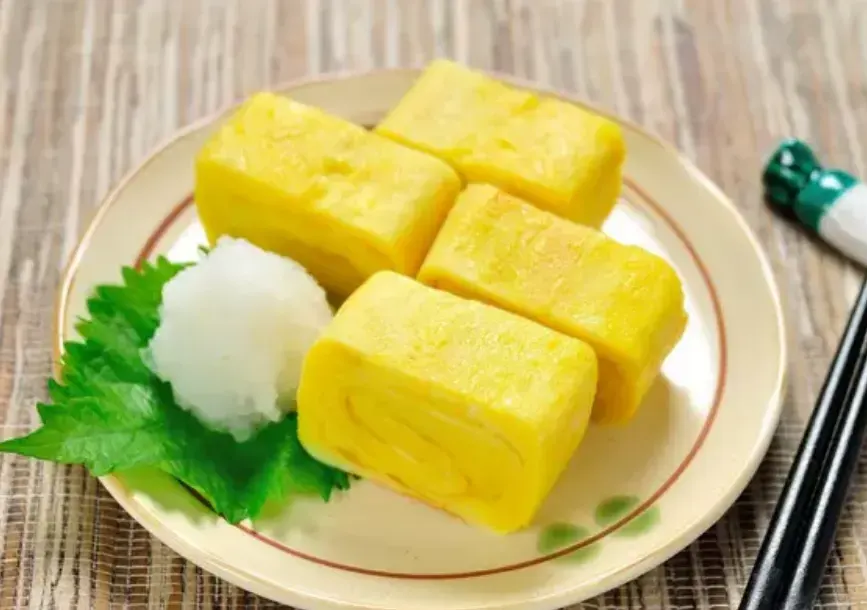
Yudofu (Hot Tofu)
Yudofu is a simple and healthy Japanese breakfast dish that showcases the delicate flavor and texture of tofu.
In this dish, tofu is gently simmered in a kombu (seaweed) and dashi broth until it becomes soft and silky.
The tofu is typically served hot in a bowl and accompanied by a dipping sauce made from soy sauce, grated ginger, and green onions.
Yudofu is a light yet satisfying breakfast option, appreciated for its soothing qualities and the clean taste of tofu.
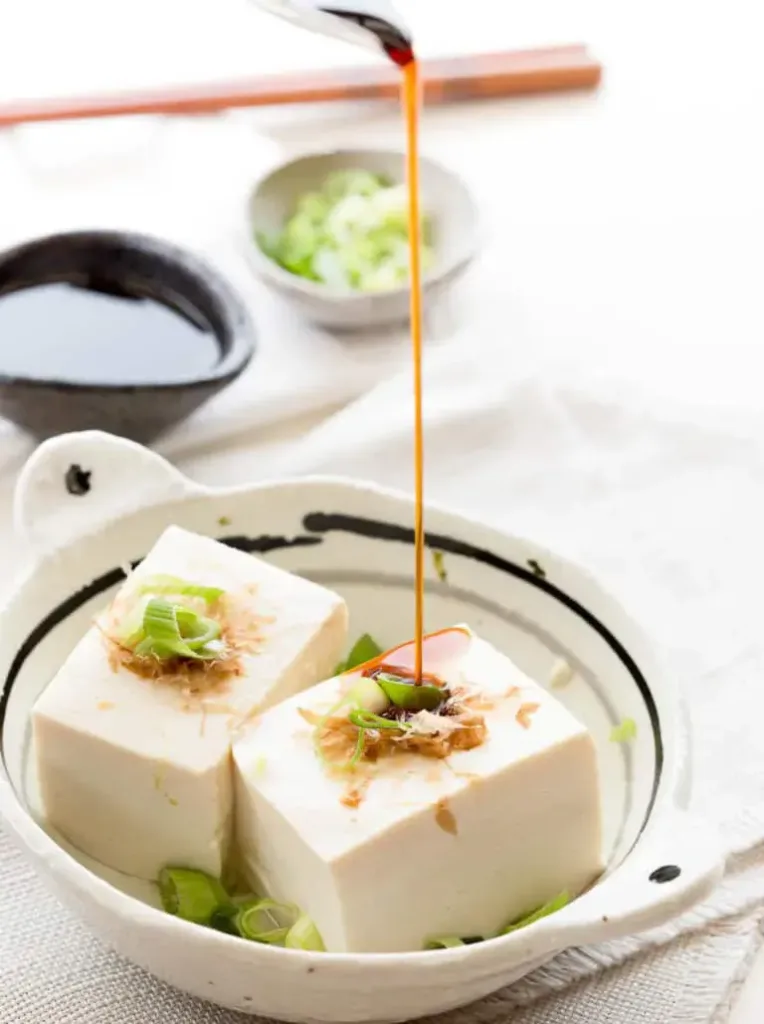
Chawanmushi (Savory Egg Custard)
Chawanmushi is a delicate and savory egg custard that is often enjoyed as a breakfast dish in Japan.
The custard is made with eggs, dashi, soy sauce, and sometimes mirin. The mixture is then steamed, resulting in a smooth and silky texture.
Chawanmushi is typically served in a small cup or bowl and can contain various ingredients such as shrimp, chicken, mushrooms, or ginkgo nuts.
The custard is delicate in flavor, and the addition of ingredients provides contrasting textures, making it an elegant and flavorful breakfast choice.
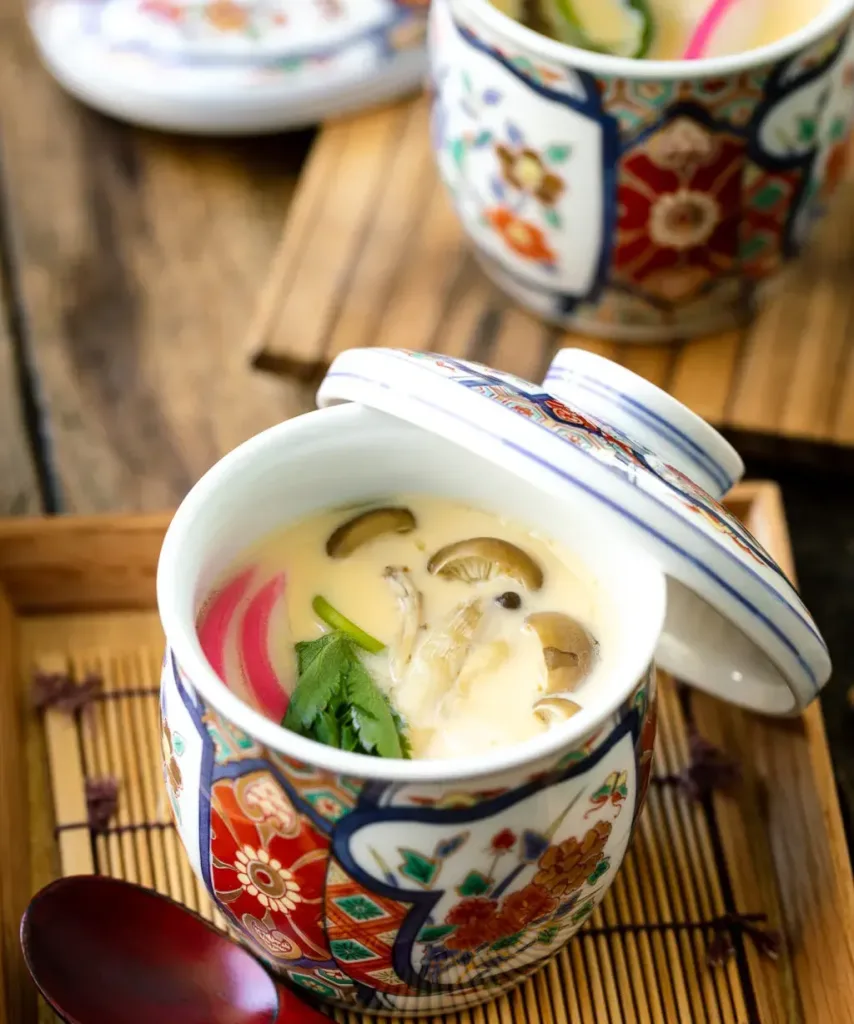
Nasu Dengaku (Grilled Miso Eggplant)
Nasu Dengaku is a popular Japanese breakfast dish featuring grilled eggplant topped with a sweet and savory miso glaze.
It is then generously brushed with a mixture of miso paste, mirin, sugar, and sometimes soy sauce, and broiled until the glaze becomes caramelized.
Nasu Dengaku is often garnished with sesame seeds and green onions, adding a nutty and fresh element to the dish.
The combination of smoky eggplant and umami rich miso creates a delightful and flavorful breakfast option.
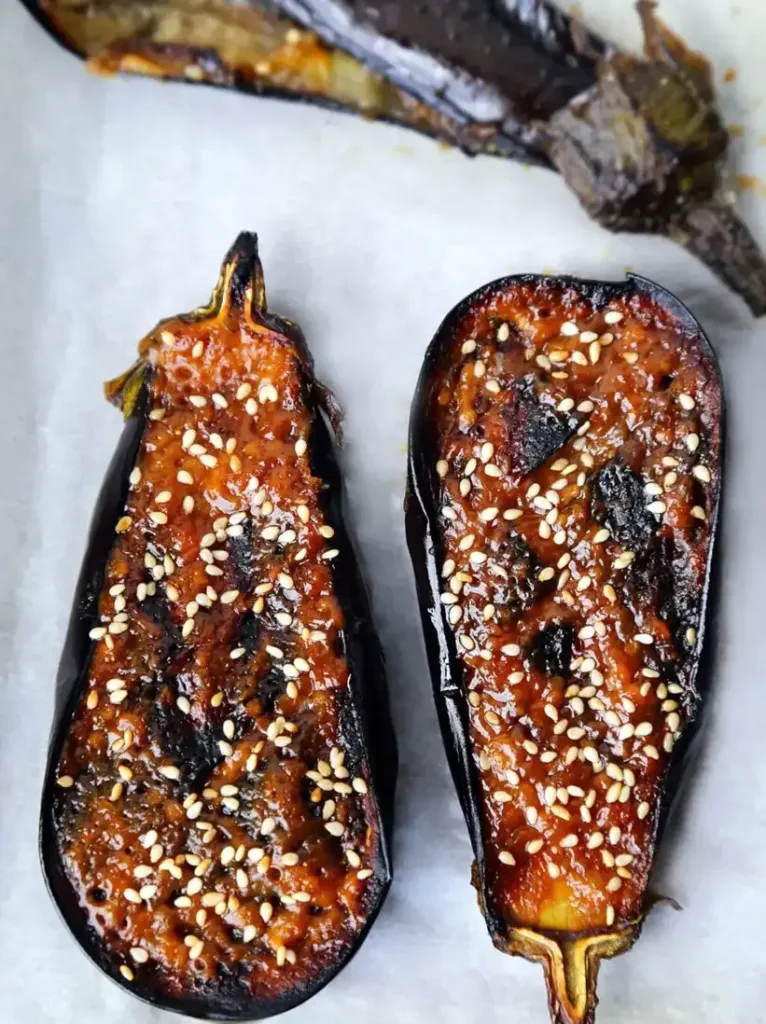
Kare Raisu (Japanese Curry Rice)
Kare Raisu, or Japanese curry rice, is a beloved breakfast dish that combines aromatic curry with steamed rice.
Japanese curry is different from Indian or Thai curry, having a milder flavor and thicker consistency.
It is made by stewing meat and vegetables in a roux made from curry powder, flour, and oil.
Kare Raisu is often garnished with pickles and can be customized with additional toppings like breaded pork cutlets (katsu) or soft boiled eggs.

Saba Shioyaki (Grilled Salted Mackerel)
Saba Shioyaki is a popular breakfast dish featuring grilled salted mackerel.
The fish is seasoned with salt and grilled until the skin becomes crispy and the flesh turns tender and flavorful.
The natural oils in mackerel give it a rich and distinctive taste. It is served with fresh lemon juice and grated daikon radish to balance the flavors.
The dish is enjoyed for its simplicity, bold flavors, and high nutritional content, including omega-3 fatty acids.
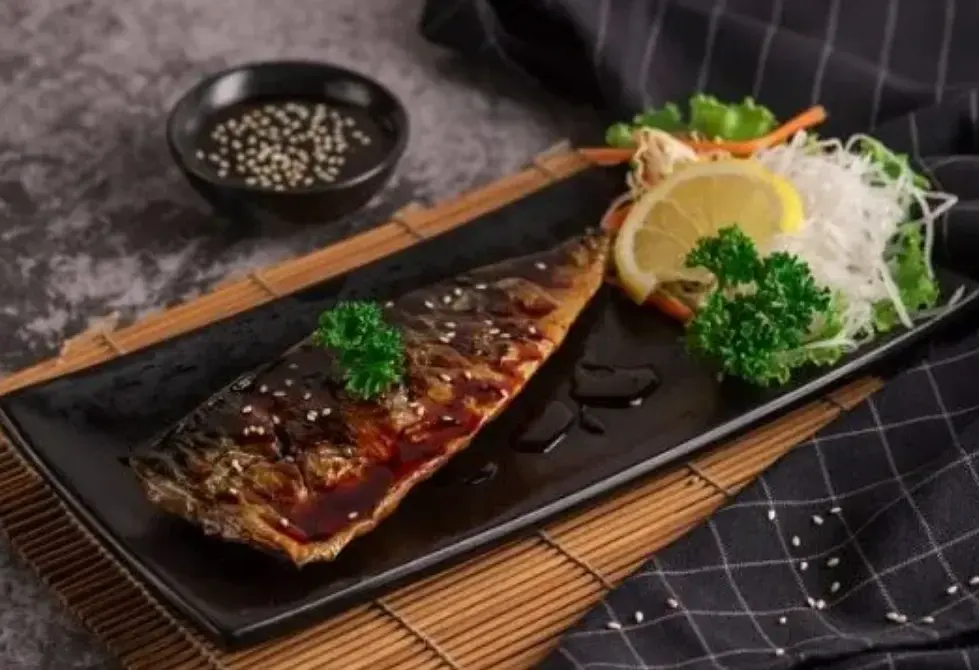
Yaki Onigiri (Grilled Rice Balls)
Instead of enjoying them plain, Yaki Onigiri is grilled to create a crispy outer layer while maintaining a soft and fluffy interior.
The rice balls are brushed with soy sauce or miso glaze before grilling, adding a savory and umami rich flavor.
The result is a delightful combination of textures, with a crunchy exterior and a warm, tender center.
Yaki Onigiri is often enjoyed on its own or served with various toppings such as bonito flakes, mayonnaise, or pickled vegetables.
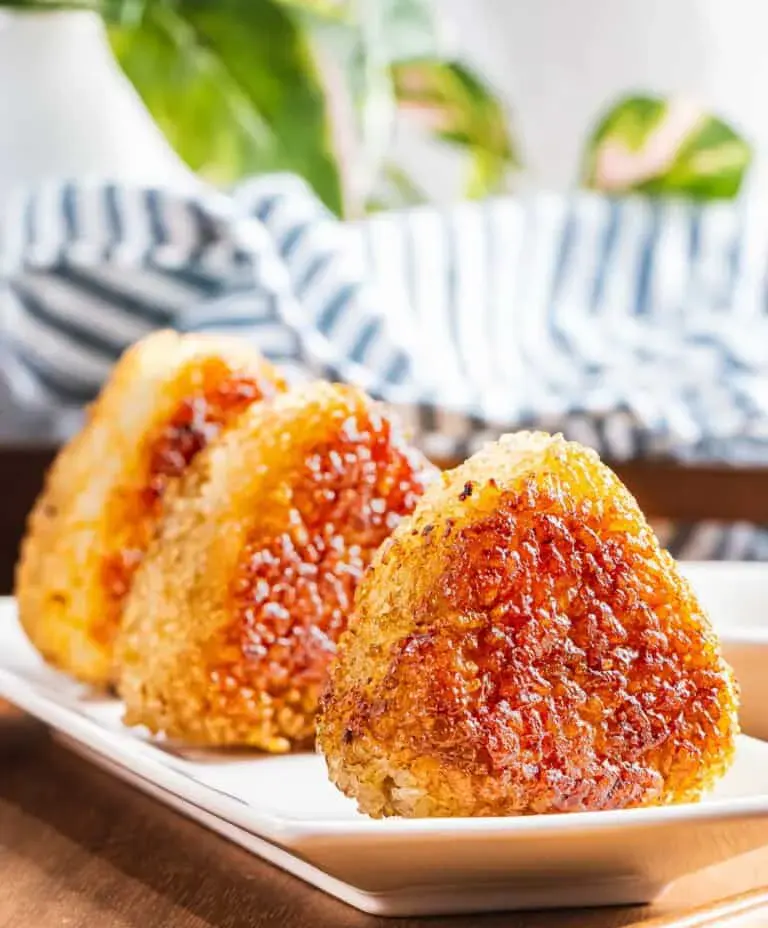
Hiroshima Style Okonomiyaki
Hiroshima style Okonomiyaki is a regional variation of the popular Japanese savory pancake.
It is named after the city of Hiroshima and features layers of ingredients cooked on a hot griddle.
On top of the cabbage, layers of sliced pork, noodles (usually yakisoba), bean sprouts, green onions, and sometimes cheese or seafood are added.
Hiroshima-style Okonomiyaki is typically finished with a drizzle of okonomiyaki sauce, mayonnaise, and sprinkled with bonito flakes and seaweed powder.
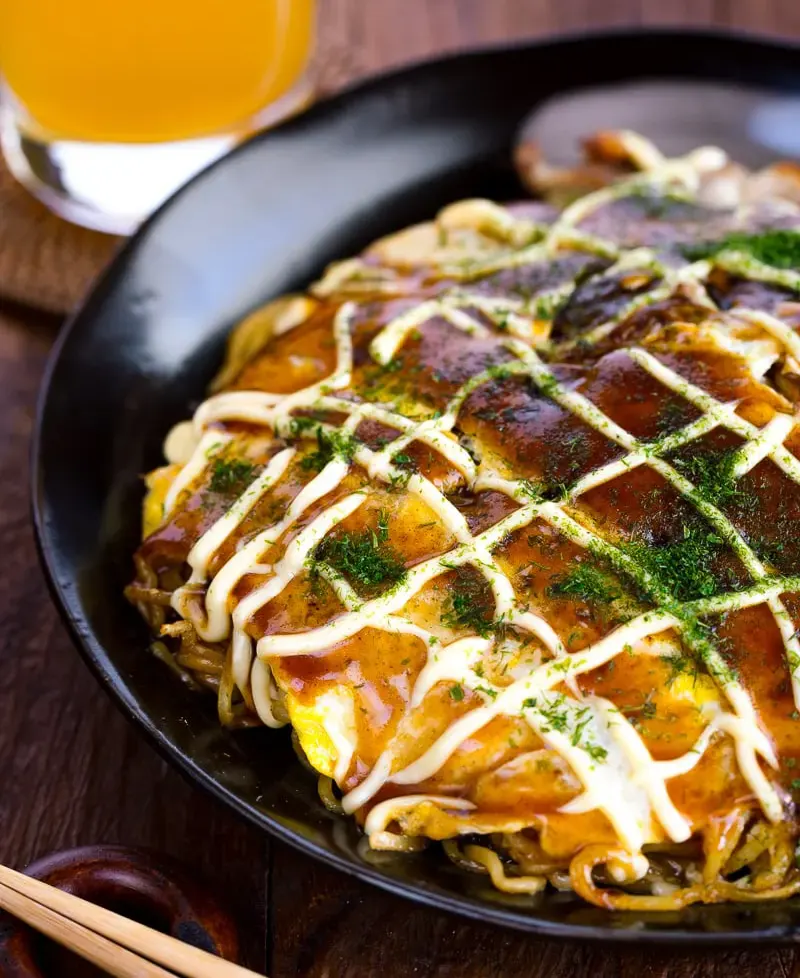
Oden (Hot Pot with Various Ingredients)
Oden is a popular Japanese hot pot dish that is commonly enjoyed during colder months.
It features a simmering broth made from dashi and soy sauce, in which various ingredients are cooked and infused with flavor.
Typical oden ingredients include tofu, daikon radish, boiled eggs, konnyaku (jelly like food), fish cakes, and vegetables.
These ingredients soak up the savory broth, creating a comforting and nourishing breakfast option.
Oden is often served with hot mustard or adip prepared with from soy sauce and grated daikon radish.
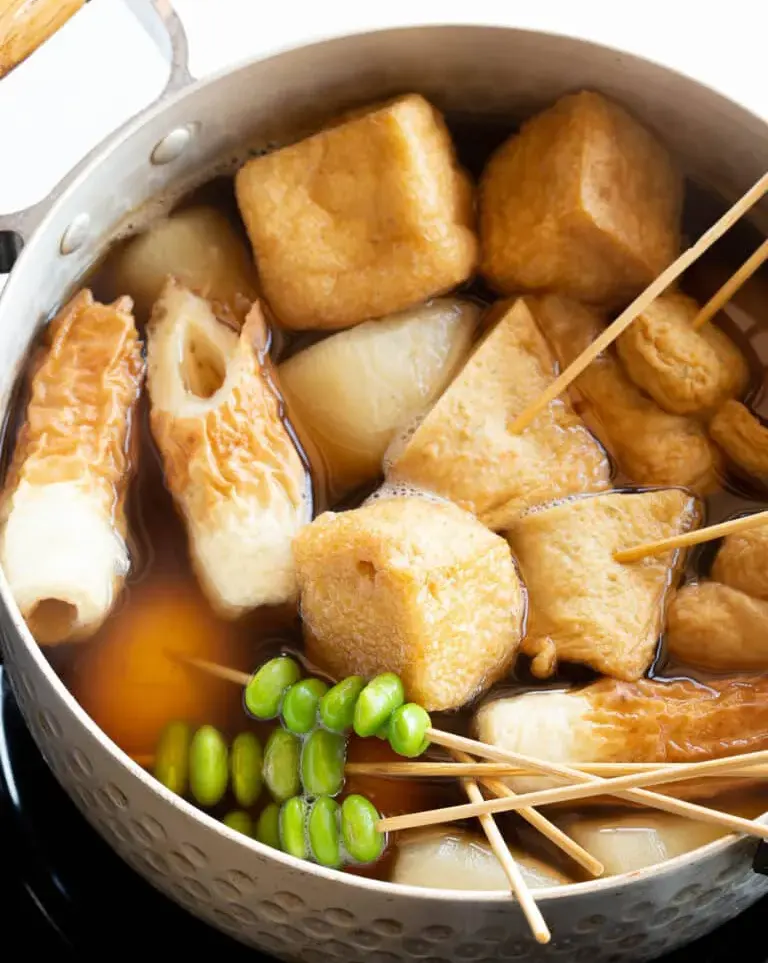
Katsu Sandwich (Breaded Pork Cutlet Sandwich)
Katsu Sandwich is a popular Japanese breakfast that’s a combo of breaded and deep-fried pork cutlet sandwiched between slices of soft white bread.
The pork cutlet is typically tenderized, coated in breadcrumbs, and fried until golden and crispy.
The sandwich is often dressed with tonkatsu sauce, mayonnaise, and shredded cabbage for added freshness and crunch.
Katsu Sandwiches are known for their hearty and satisfying nature, making them a favorite on the go breakfast choice in Japan.
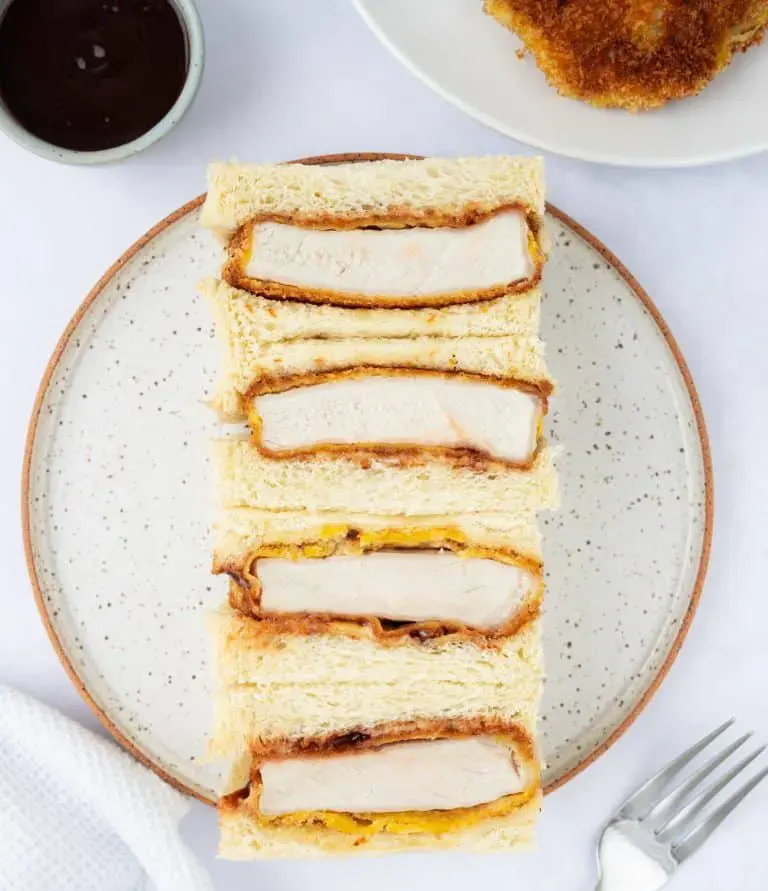
Kinako Toast (Toasted Bread with Soybean Flour)
Kinako Toast is a simple yet delightful Japanese breakfast treat. Kinako has a nutty and slightly sweet flavor, adding a unique taste to the toast.
It involves toasting slices of bread until golden and crisp, then generously spreading them with a layer of kinako, which is roasted soybean flour.
It is often dusted with a sprinkling of sugar and paired with honey or sweetened condensed milk.
Kinako Toast provides a comforting and satisfying breakfast option, perfect for those who enjoy the natural flavors of soybeans.
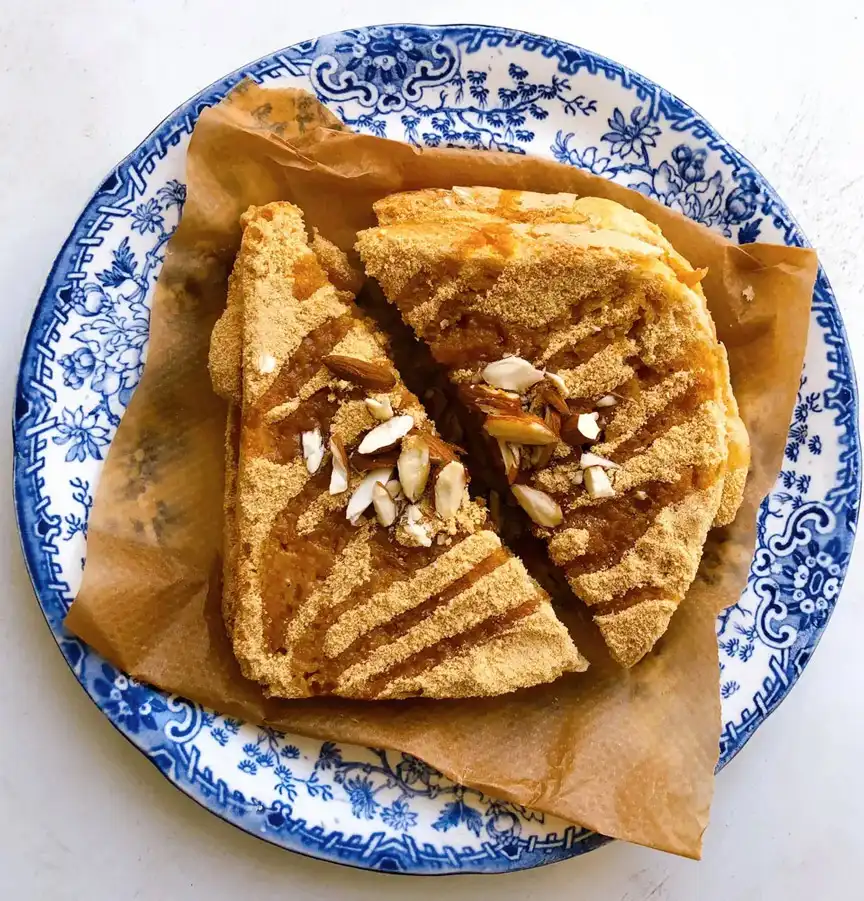
Somen Salad (Cold Wheat Noodles Salad)
Somen Salad is a refreshing and light Japanese breakfast dish that features cold wheat noodles.
Somen noodles are thin and delicate, usually served chilled during the warmer months.
The noodles are cooked, rinsed under cold water, and topped with ingredients such as thinly sliced cucumbers, carrots, ham, eggs, and nori.
The salad is often dressed with a tangy and savory sauce made from soy sauce, rice vinegar, sesame oil, and sometimes a hint of ginger.
Somen Salad provides a cool and satisfying breakfast option, perfect for hot summer days.
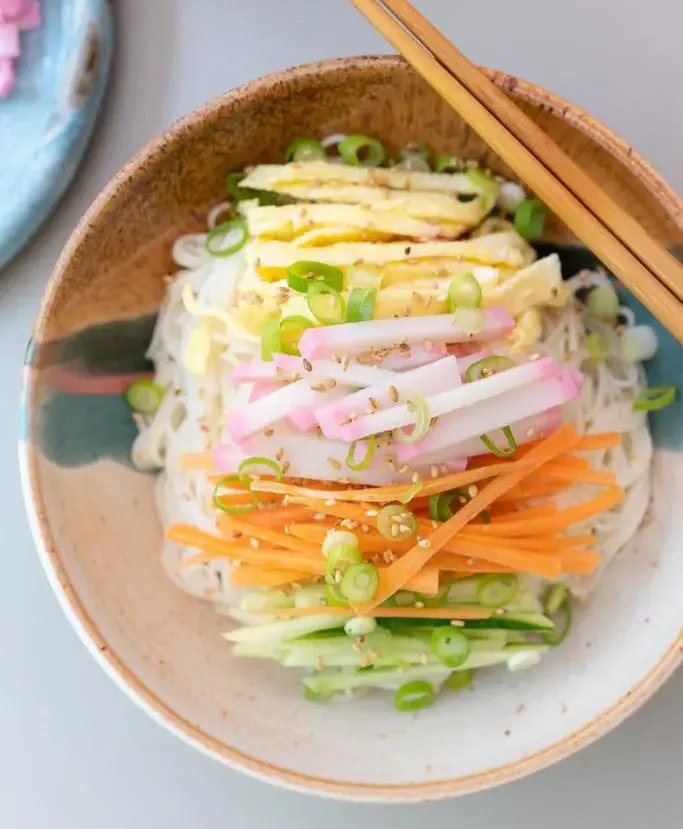
Nikujaga (Meat and Potato Stew)
Nikujaga is a hearty and comforting Japanese stew that combines tender slices of beef with potatoes, onions, carrots, and sometimes other vegetables.
The dish is cooked in a flavorful broth made from soy sauce, sugar, and mirin.
Nikujaga is known for its rich umami taste and the melt in your mouth texture of the meat.
It is often enjoyed with a bowl of steamed rice, making it a fulfilling and nourishing breakfast choice, especially during the colder months.
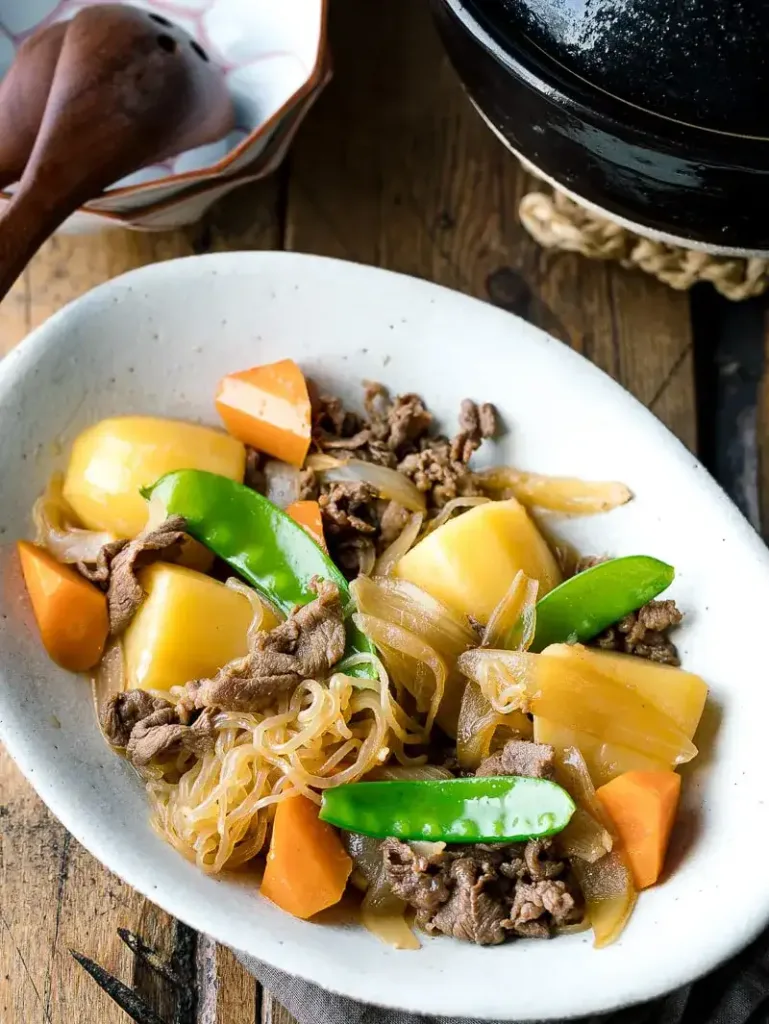
Tofu Scramble with Vegetables
Tofu Scramble with Vegetables is a vegan friendly Japanese breakfast dish that offers a nutritious and protein-rich start to the day.
It involves crumbling tofu and sautéing it with a variety of colorful bell peppers, mushrooms, spinach, and onions.
The scramble is seasoned with soy sauce, nutritional yeast, turmeric, and other spices to add flavor and give the tofu an egg-like appearance.
Tofu Scramble with Vegetables can be enjoyed on its own or served with a side of steamed rice or toasted bread.

Takoyaki (Octopus Balls)
It’s a go to street food in Japan that can also be enjoyed as a breakfast item. They offer a flavorful and indulgent breakfast treat.
These bite-sized snacks are made from a batter consisting of flour, eggs, and dashi, filled with small pieces of octopus, green onions, and pickled ginger.
The batter is poured into a takoyaki pan with half spherical molds and cooked until golden brown on the outside while maintaining a soft and gooey center.
Takoyaki is typically served with a drizzle of takoyaki sauce, mayonnaise, and sprinkled with bonito flakes and dried seaweed.
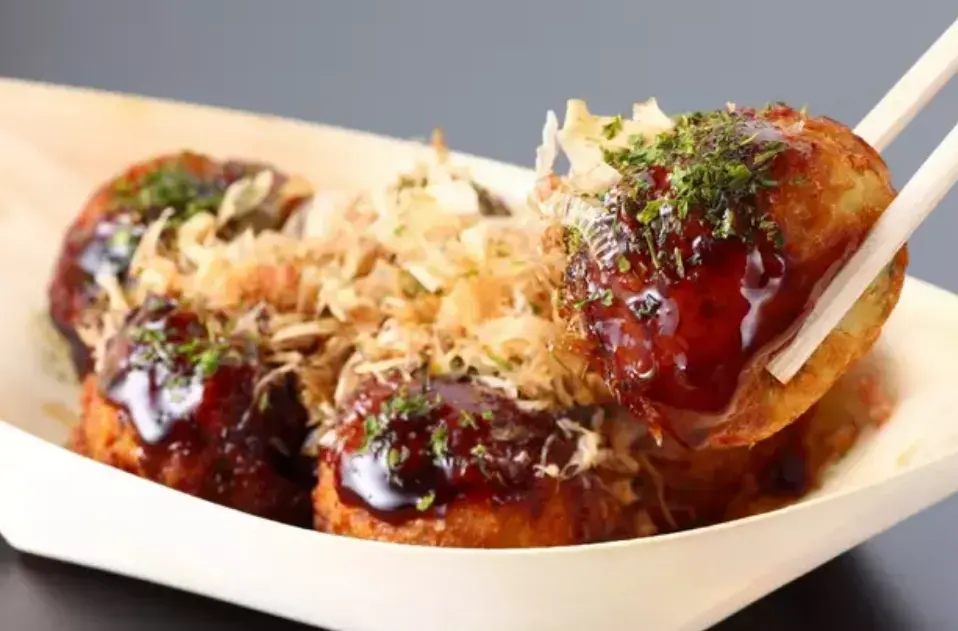
Matcha Pancakes with Red Bean Paste (Dorayaki)
Matcha Pancakes with Red Bean Paste, also known as Dorayaki, are a delightful Japanese breakfast treat.
Dorayaki consists of two fluffy and slightly sweet pancakes sandwiched together with a filling of sweetened red bean paste (anko).
The pancakes are made with a batter containing flour, sugar, eggs, and matcha powder, giving them a vibrant green color and a subtle earthy flavor.
Matcha Pancakes with Red Bean Paste are enjoyed for their combination of textures, flavors, and the unmistakable taste of matcha.
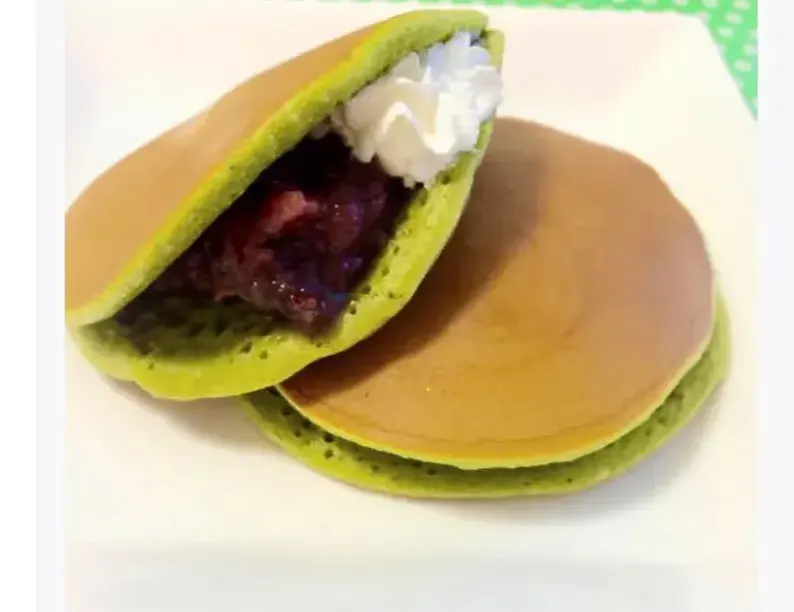
Final Thoughts
Many people get surprised when they see soups and main dish like Japanese breakfast recipes, but it’s true because their cuisine is very different.
Irrespective of which one you choose, all the Japanese breakfast recipes are innovative and will be a delightful meal for your grumpy mornings.
We are sure that all these recipes will make you smile and brighten up your breakfast table because you deserve a good start to the morning.
So, if you are ready to dig in, we recommend running a short grocery trip because you might need some new ingredients.




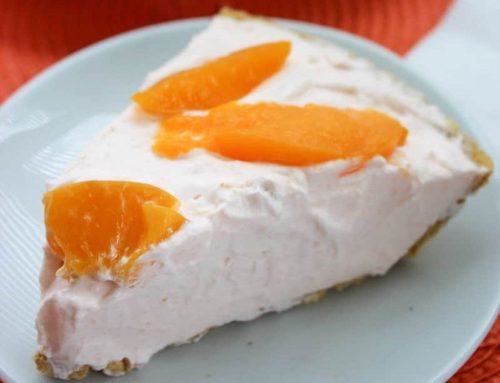

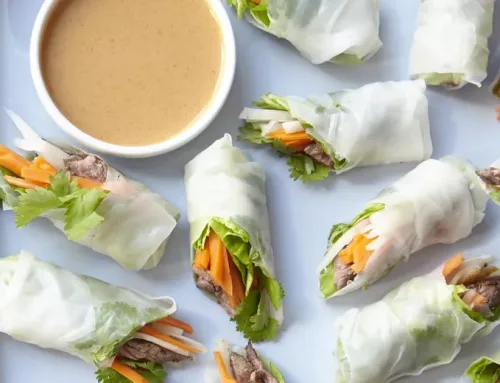


Leave A Comment